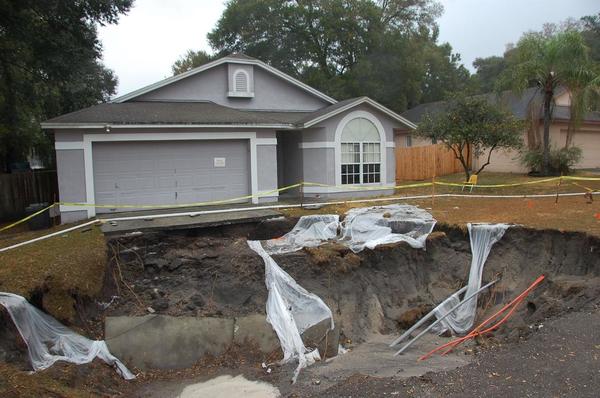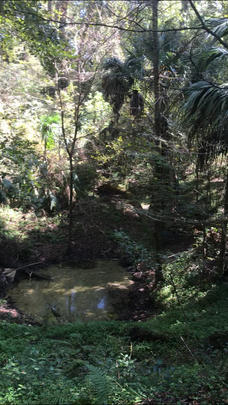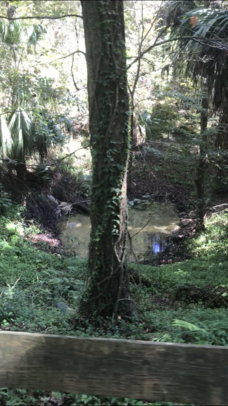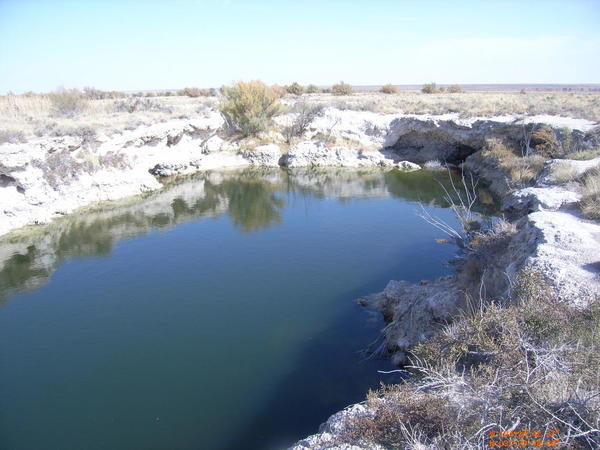What No One Tells You About Sinkholes
What No One Tells You About Sinkholes
Sinkhole. If you’re like most people, when you hear that word you automatically think of disaster: roads caving in or houses falling into the ground.

Sinkhole in front of house. (Photo: Ann Tihansky, USGS)
But what if I told you that sinkholes aren’t always bad? Yes, they can be devastating when they occur in populated areas. But what about when they appear in places without people?


Sinkhole at Kanapaha Botanical Gardens (Photo: Julianne Werts)
A sinkhole can create an entirely new habitat for plants and animals. Because they are lower, they tend to be cooler, wetter, and shadier than the surrounding landscape, and the exposed limestone also creates more calcium-rich soil. This creates a niche for different species to fill. Plants like Woods Fern, Box Elder trees, and Shumard Oaks can flourish in places they would otherwise never be found. Water collects at the bottom, providing another resource for wildlife around the area as well.
Have you ever seen a lake or a pond in Florida? Chances are that was actually a sinkhole! Large sinkholes will fill with water, eventually bringing new plants and animals as well. It might start with insects moving in, which could bring birds and frogs. A stream might form, eventually connecting it to a larger river. Now fish can move up that stream and fill the new lake as well. And boom: a brand-new ecosystem just from some earth collapsing in on itself.

Bitter Lake Sinkhole (Photo: Johnathan Bumgarner, USGS)
So why do sinkholes happen in the first place? Well, a lot of it has to do with the fact that Florida’s bedrock is made of limestone. When it rains, the water picks up carbon dioxide in the atmosphere, making it slightly acidic. As it seeps through the ground it dissolves the limestone and creates small holes throughout the bedrock. Eventually this can weaken the rock enough that it can no longer support what is above it, so it collapses and becomes a sinkhole.
There are ways that we can help prevent them from happening more often, like using less water so the aquifer stays full and supports the limestone above it. But many of them are completely natural occurrences. So the next time you hear the word sinkhole, remember that while some can be destructive, many of them create some amazing things as well.